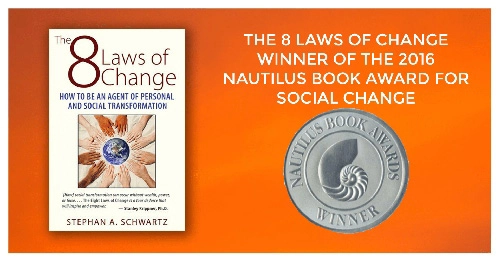Friday, January 20th, 2017
Matthew Brown and Matthew Daly, - The Associated Press/Salon
Stephan: As of noon today the United States at both the federal and state -- at least a majority of states -- will be governed by the Republican Party, and one of the first actions it is planning is revamping the Endangered Species Act. Republicans, and to be fair a few Democrats, don't like this act because it blocks their ability to make profit for themselves and the lords to whom they owe fealty, particularly from exploiting public lands. This report lays out the issues and will help you wade through the miasma of BS I expect to see in the debate.
Only citizen action, that means you, is going to stop this depredation.

Tiny fish, including delta smelt, caught in the Sacramento-San Joaquin River Delta, are seen through a microscope at a California Department of Fish and Game laboratory in Stockton, Calif. In control of Congress and soon the White House, Republicans are readying plans to roll back the influence of the Endangered Species Act, one of the government’s most powerful conservation tools, after decades of complaints that it hinders drilling, logging and other activities.
Credit: AP/Rich Pedroncelli
BILLINGS, MONTANA — In control of Congress and soon the White House, Republicans are readying plans to roll back the influence of the Endangered Species Act, one of the government’s most powerful conservation tools, after decades of complaints that it hinders drilling, logging and other activities.
Over the past eight years, GOP lawmakers sponsored dozens of measures aimed at curtailing the landmark law or putting species such as gray wolves and sage grouse out of its reach. Almost all were blocked by Democrats and the White House or lawsuits from environmentalists.
Now, with the ascension of President-elect Donald […]
No Comments
Friday, January 20th, 2017
Stephan: When I first began travelling in the world, one of the notable things about the United States was that it was one place where you could drink safe water almost anywhere. Whatever came out of the tap was o.k.. Many other places, particularly rural areas, you could only drink bottled water, although you still often had to shower in marginal water. More than once I can remember boiling water to make it safe to wash the dishes in.
Now this is becoming an issue in this country, and even more alarming, water is being privatized. Here is a fact based assessment of this trend, about which almost nothing is being said. This is not an optimistic story.
Read the full paper at PLOS ONE  Access to clean water remains a huge problem around the US — while Flint has been in the headlines, thousands of other locales are struggling with similar problems. But access to clean water isn’t the only issue facing Americans — access to affordable water, period, is becoming riskier and riskier around the country. This map shows census tracts where access to affordable water is defined as either “at-risk” or “high-risk” — it’s not pretty.
Access to clean water remains a huge problem around the US — while Flint has been in the headlines, thousands of other locales are struggling with similar problems. But access to clean water isn’t the only issue facing Americans — access to affordable water, period, is becoming riskier and riskier around the country. This map shows census tracts where access to affordable water is defined as either “at-risk” or “high-risk” — it’s not pretty.
Here’s how the study’s authors define “at-risk” and “high-risk”:
The high-risk group is defined as people located in census tracts with median incomes below $32,000. These are census tracts with likely concentrations of people who face affordability challenges based on current water rates. The at-risk group is defined as tracts with median incomes between $32,000 and $45,120. These at-risk tracts have concentrations of people with median incomes below the minimum income thresholds needed to afford future increases in water rates.
And they’re not optimistic about the future of water access around the country:
[W]hile water rates are currently unaffordable for […]
No Comments
Friday, January 20th, 2017
Stephan: First, let me note that this is really good trend analysis. Just as a piece of work, this is very impressive. As we convert to electricity instead of carbon fuel there is going to be an interim phase where everything will hinge on batteries and, since batteries are basically a chemistry technology raw materials, particularly rare raw materials become the weak link. This is the cobalt trend.
And we can see it playing out with Tesla. I think China has realized that the U.S. for the next four years is enthrall to carbon energy, and now is the time to make their move. Chinese batteries suppliers may cut their prices by 35%-40% in 2017, while still making a profit, which would have a significant effect on other suppliers, notably Tesla. If they have batteries, and are already the leaders in panel construction, they will create millions of jobs and energize (pun intended) their entire society through the trillions made as the world converts.
In the longer term though although batteries will still be a critical component in my view much of the battery technology will be replaced by LENR. SRI has now published an over-unity report that seems credible. This is not going to be for little things like smart phones, but for things like vehicles, and houses, and it will be an easy upgrade because LENR will just plug in where batteries once stood.
 Since early March I’ve written five articles that focus on supply and demand dynamics in the cobalt mining sector and explain why I believe the lithium-ion battery industry is facing a raw materials shortage of epic proportions. Today I’ll drill down into market dynamics within the lithium-ion battery industry and explain why I believe cheap lithium-ion batteries for electric vehicles (EVs) will be the first casualties of the Cobalt Cliff.
Since early March I’ve written five articles that focus on supply and demand dynamics in the cobalt mining sector and explain why I believe the lithium-ion battery industry is facing a raw materials shortage of epic proportions. Today I’ll drill down into market dynamics within the lithium-ion battery industry and explain why I believe cheap lithium-ion batteries for electric vehicles (EVs) will be the first casualties of the Cobalt Cliff.
I want to begin with an explanation that I’ve derived most of the numbers in this article by digitizing graphs from Avicenne Energy’s presentation at AABC 2016 in Mainz, Germany, a process that’s inherently imprecise. While I believe my estimates are close enough to offer a good overview, digitization is dependent on the visual acuity of the human being running the software and like most humans I’m imperfect on my best days.
Based on a careful analysis of Avicenne’s graphs I’ve estimated that in 2015 the lithium-ion battery industry manufactured cells with 61,500 MWh of capacity and generated $17.2 billion in revenue, which works out to an industry-wide average revenue of $280 per kWh […]
No Comments
Friday, January 20th, 2017
George Dvorsky, - Gizmodo
Stephan: Is this alarmist? No it is based on facts. Except one fact is missing. Like earthquakes we don't know when such an even might occur. But, if it did, this is what it would look like according a selection of measures.
And as you read it, think about how much more important this issue will be the further we move from carbon to electricity.

Solar storm
Credit: NASA
Our planet is due to be hit with a powerful solar storm, an event that happens about once every hundred years. New research shows that losses from the ensuing blackouts could total $41.5 billion per day in the US alone, including nearly $7 billion lost in trade.
A
study published in
Space Weather shows that a sufficiently powerful solar storms is capable of throwing the American economy into utter turmoil by knocking out the transformers required to transmit electricity throughout the nation’s power grids. Depending on the severity of the solar blast, the daily economic cost would be in the tens of billions of dollars, with more than half of those losses coming from indirect costs beyond immediately stricken regions.
Solar storms are space weather events in which the sun, via coronal mass ejections (CMEs), spews any number of nasties our way, including x-rays, charged particles, and magnetized plasma. Our high-tech civilization is becoming increasingly vulnerable to the effects of these storms, which have the potential […]
2 Comments
Thursday, January 19th, 2017
Kenneth T. Walsh, Reporter and Columnist - US News & World Report
Stephan: As of Friday at noon, the United States will be governed at both the federal level and in the majority of states by the Republican Party. This is the result of elections, these are the people the voters of the U.S. put in office, as this report lays out. Those of us who feel that the function of the state should be to foster wellbeing may find this a rather grim reality, but I think it is important that we acknowledge it, and understand that only different election outcomes are going to change it. So although we must continue to oppose and do what we can to stop the destruction of our society and the destabilization of Earth's meta-systems, we must also create a strategy that basically gets low information religious rural Whites to recognize the people they are hurting the most by their votes are themselves. Until that happens we can expect to see people like Donald Trump elected President.
 To understand Donald Trump‘s potential to be a truly consequential president, it’s necessary to grasp a fundamental reality of American politics today: His fellow Republicans are not only the ascendant party in Washington, they are the dominant party nationwide and at the state level. “There has been an extraordinary collapse of the Democratic Party,” says political scientist Bill Galston, a former White House adviser to President Bill Clinton. “The Democrats are in the worst shape since the 1920s.” (emphasis added)
To understand Donald Trump‘s potential to be a truly consequential president, it’s necessary to grasp a fundamental reality of American politics today: His fellow Republicans are not only the ascendant party in Washington, they are the dominant party nationwide and at the state level. “There has been an extraordinary collapse of the Democratic Party,” says political scientist Bill Galston, a former White House adviser to President Bill Clinton. “The Democrats are in the worst shape since the 1920s.” (emphasis added)
This means there is a natural well of support for Trump’s conservative ideas across the country, more than Democratic insiders and the Washington punditocracy had expected. If congressional Republicans unite behind Trump, this could give him grass-roots momentum to push his agenda and overcome objections from defenders of the status quo in the capital.
During the campaign, there was a lot of chatter in Democratic, media and academic circles about the problem Republicans would have appealing to demographic groups such as African-Americans and Latinos whose numbers are growing steadily. It was also […]
2 Comments


 Access to clean water remains a huge problem around the US — while Flint has been in the headlines,
Access to clean water remains a huge problem around the US — while Flint has been in the headlines,  Since early March I’ve written
Since early March I’ve written 
 To understand
To understand 







